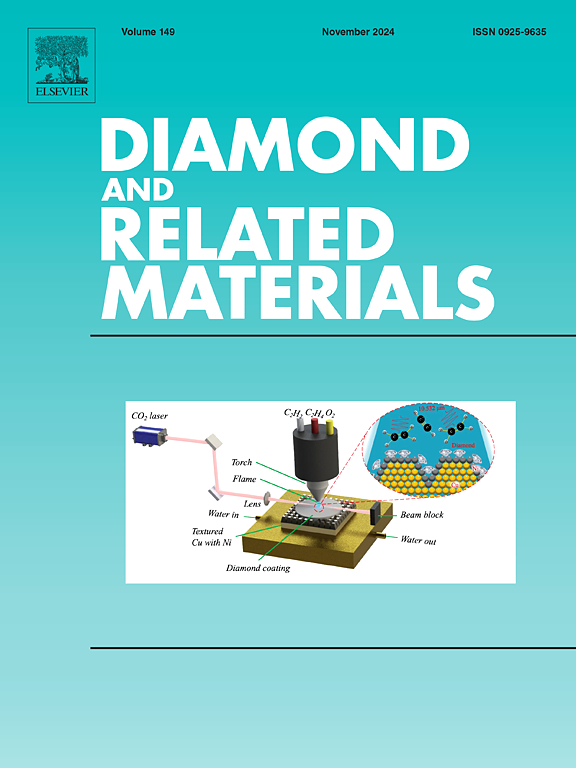Cement-based nanocomposites: The synergic effect of graphene oxide and cellulose nanofibers on microstructural features and mechanical performance
IF 5.1
3区 材料科学
Q2 MATERIALS SCIENCE, COATINGS & FILMS
引用次数: 0
Abstract
Cement-based materials are constrained by low tensile/flexural strength in structural applications. This study investigates the synergistic reinforcement of nanocellulose (CNFs) and graphene oxide (GO) through organic-inorganic modification. Composite solutions were prepared via ultrasonic dispersion with varying CNFs (0–0.05 %) and GO (0–0.05 %) ratios, followed by mechanical and microstructural analyses (SEM, XRD, FT-IR, TGA). Results demonstrated that 0.05 % CNFs combined with 0.025 % GO optimized interfacial bonding, forming a hierarchical “fiber-sheet” network. This structure bridged microcracks, refined pore distribution, and promoted uniform hydration, achieving 88.99 % and 43.14 % enhancements in 28-day compressive and flexural strengths, respectively. At a GO dosage of 0–0.025 %, GO synergizes with CNFs to prevent agglomeration and enhance the mechanical strength of cement composites, while a nanoscale dispersion strategy effectively mitigates particle aggregation at higher GO concentrations (>0.05 %). This research leverages the synergistic effect of CNFs and GO to overcome the problem of dispersion and enhanced equilibrium of nanomaterials, and provides innovative solutions for the development of high-strength, durable, and low-carbon cement-based materials to promote the development of green buildings.

水泥基纳米复合材料:氧化石墨烯和纤维素纳米纤维对微观结构特征和力学性能的协同效应
水泥基材料在结构应用中受低拉伸/弯曲强度的限制。本研究通过有机-无机改性研究了纳米纤维素(CNFs)和氧化石墨烯(GO)的协同增强。采用不同CNFs(0 - 0.05%)和GO(0 - 0.05%)配比的超声分散法制备复合溶液,并对其进行力学和微观结构分析(SEM, XRD, FT-IR, TGA)。结果表明,0.05% CNFs与0.025% GO的结合优化了界面键合,形成了层次化的“纤维片”网络。这种结构架起了微裂缝,改善了孔隙分布,促进了水化均匀,28天的抗压强度和抗折强度分别提高了88.99%和43.14%。在氧化石墨烯掺量为0 - 0.025%时,氧化石墨烯与CNFs协同防止团聚,提高水泥复合材料的机械强度,而在更高氧化石墨烯浓度(> 0.05%)下,纳米级分散策略能有效缓解颗粒团聚。本研究利用CNFs和GO的协同效应,克服纳米材料分散和增强平衡的问题,为开发高强度、耐用、低碳的水泥基材料提供创新的解决方案,促进绿色建筑的发展。
本文章由计算机程序翻译,如有差异,请以英文原文为准。
求助全文
约1分钟内获得全文
求助全文
来源期刊

Diamond and Related Materials
工程技术-材料科学:综合
CiteScore
6.00
自引率
14.60%
发文量
702
审稿时长
2.1 months
期刊介绍:
DRM is a leading international journal that publishes new fundamental and applied research on all forms of diamond, the integration of diamond with other advanced materials and development of technologies exploiting diamond. The synthesis, characterization and processing of single crystal diamond, polycrystalline films, nanodiamond powders and heterostructures with other advanced materials are encouraged topics for technical and review articles. In addition to diamond, the journal publishes manuscripts on the synthesis, characterization and application of other related materials including diamond-like carbons, carbon nanotubes, graphene, and boron and carbon nitrides. Articles are sought on the chemical functionalization of diamond and related materials as well as their use in electrochemistry, energy storage and conversion, chemical and biological sensing, imaging, thermal management, photonic and quantum applications, electron emission and electronic devices.
The International Conference on Diamond and Carbon Materials has evolved into the largest and most well attended forum in the field of diamond, providing a forum to showcase the latest results in the science and technology of diamond and other carbon materials such as carbon nanotubes, graphene, and diamond-like carbon. Run annually in association with Diamond and Related Materials the conference provides junior and established researchers the opportunity to exchange the latest results ranging from fundamental physical and chemical concepts to applied research focusing on the next generation carbon-based devices.
 求助内容:
求助内容: 应助结果提醒方式:
应助结果提醒方式:


